What range is this antenna? Measuring antenna performance with the OSA103 Mini
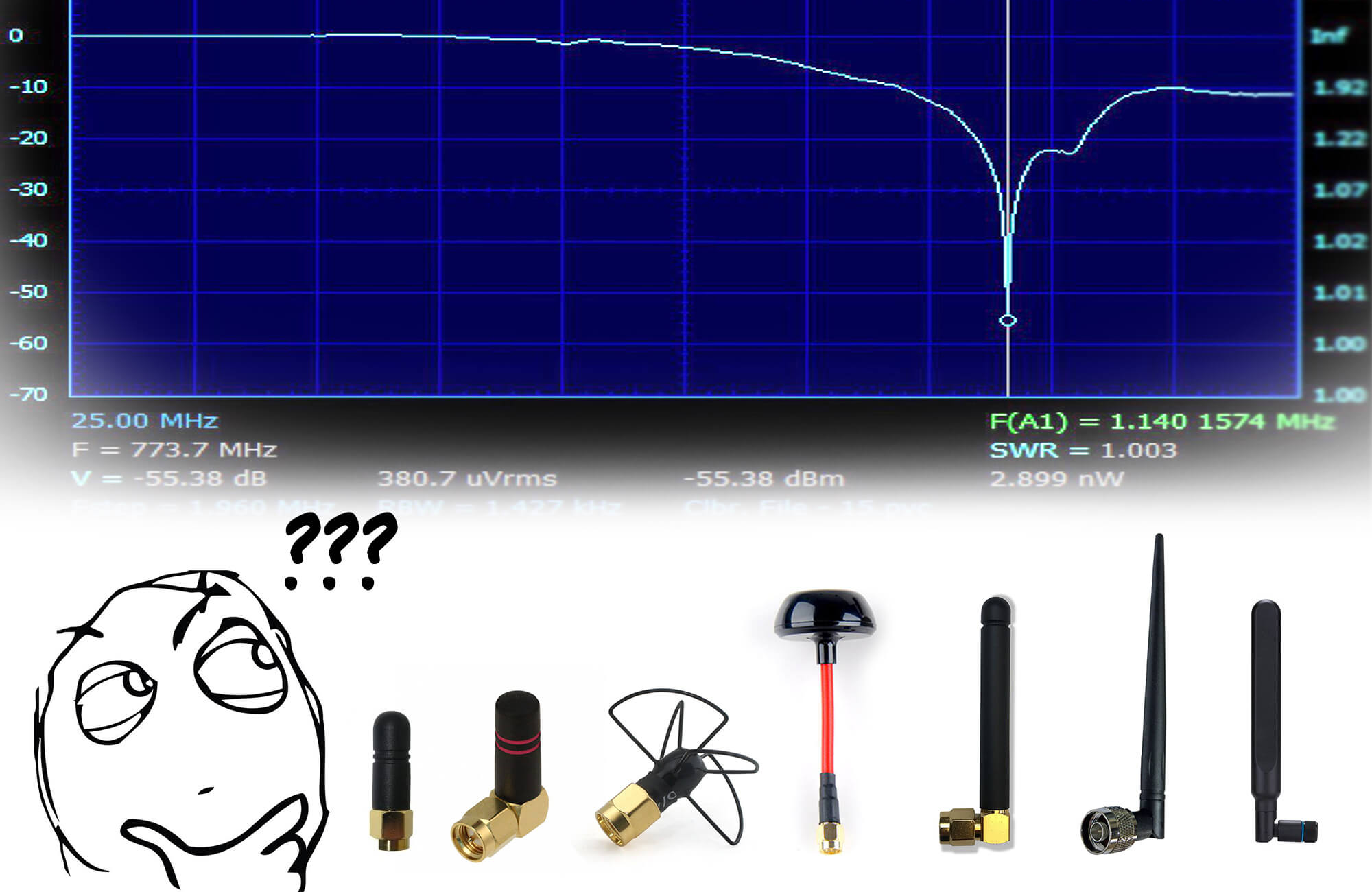
- What range is this antenna?
- I don’t know, check it.
- KAAAK?!?!
How to determine what kind of antenna you have in your hands if there is no marking on it? How to understand which antenna is better or worse? This problem tormented me for a long time.
The article describes in simple language a method for measuring the characteristics of antennas, and a method for determining the frequency range of an antenna.
For experienced radio engineers, this information may seem trivial, and the measurement technique may not be accurate enough. The article is intended for those who do not understand anything at all in radio electronics, like me.
TL; DR We will measure the SWR of antennas at different frequencies with the help of the OSA 103 Mini instrument and a directional coupler, build a graph of the SWR versus frequency.
Theory
When the transmitter sends a signal to the antenna, part of the energy is radiated into the air, and part is reflected and comes back. The ratio between radiated and reflected energy is characterized by the standing wave coefficient (SWR or SWR). The smaller the SWR, the greater part of the transmitter energy is emitted in the form of radio waves. At SWR = 1 there is no reflection (all energy is emitted). The SWR of a real antenna is always greater than 1.
If you send a signal of a different frequency to the antenna and measure the SWR at the same time, you can find at what frequency the reflection will be minimal. This will be the working range of the antenna. You can also compare different antennas for the same band and find which one is better.
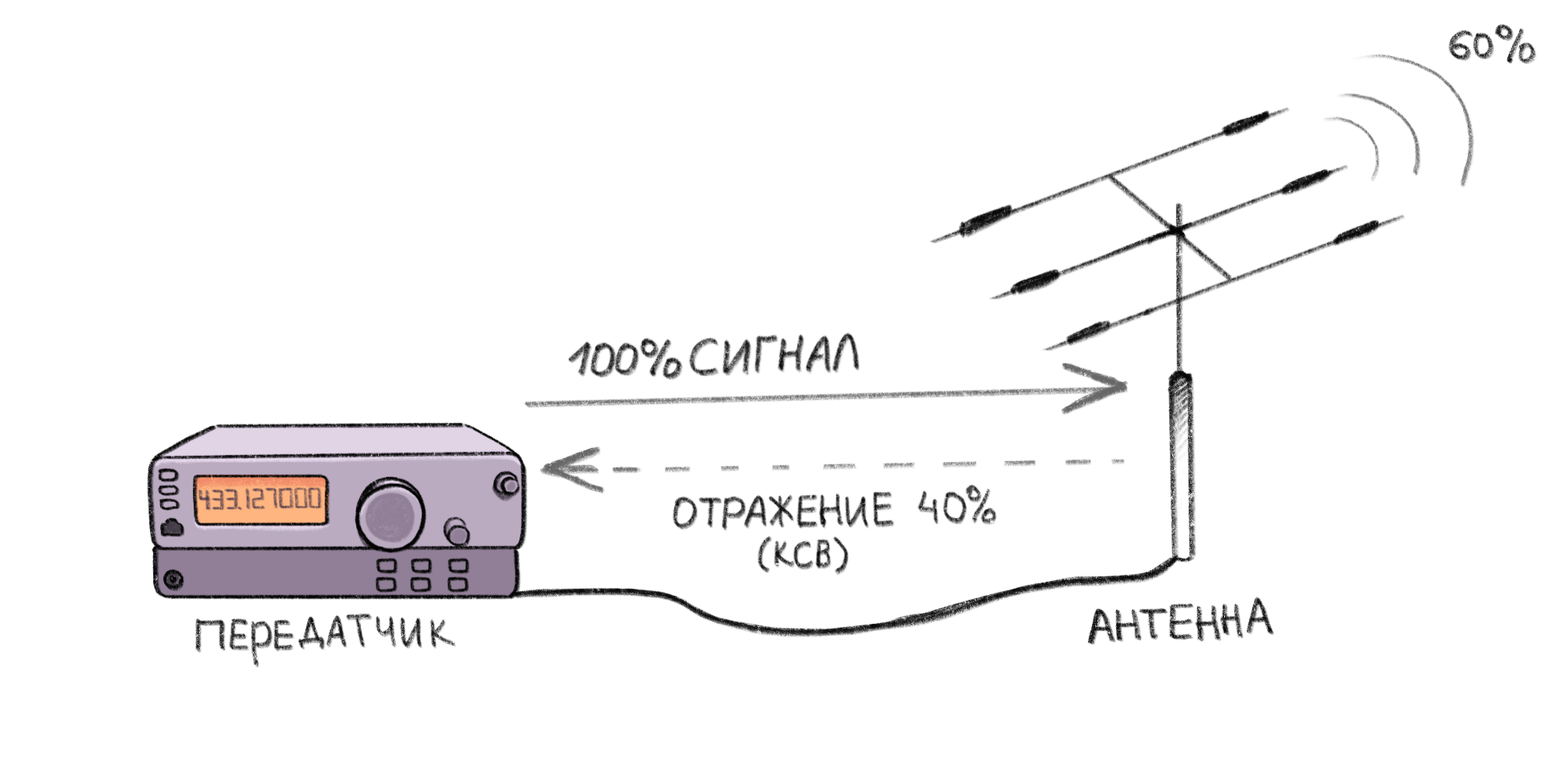
A portion of the transmitter signal is reflected from the antenna
An antenna designed for a certain frequency, in theory, should have the lowest SWR at its operating frequencies. So it’s enough to emit different frequencies into the antenna and find at what frequency the reflection is the least, that is, the maximum amount of energy has flown in the form of radio waves.
Having the ability to generate a signal at different frequencies and measure reflection, we can build a graph that has a frequency along the X axis and a signal reflection coefficient along the Y axis. As a result, where there will be a dip in the graph (that is, the smallest reflection of the signal), there will be an antenna operating range.

An imaginary plot of reflection versus frequency. Over the entire range, 100% reflection, except for the working frequency of the antenna.
Osa103 Mini
For measurements we will use the OSA103 Mini . This is a universal measuring device that combines an oscilloscope, a signal generator, a spectrum analyzer, a frequency / phase response meter, a vector antenna analyzer, an LC meter, and even an SDR transceiver. The operating range of the OSA103 Mini is limited to 100 MHz, the OSA-6G module extends the frequency range in the A / C mode to 6 GHz. The native program with all functions weighs 3 MB, works under Windows and through wine in Linux.
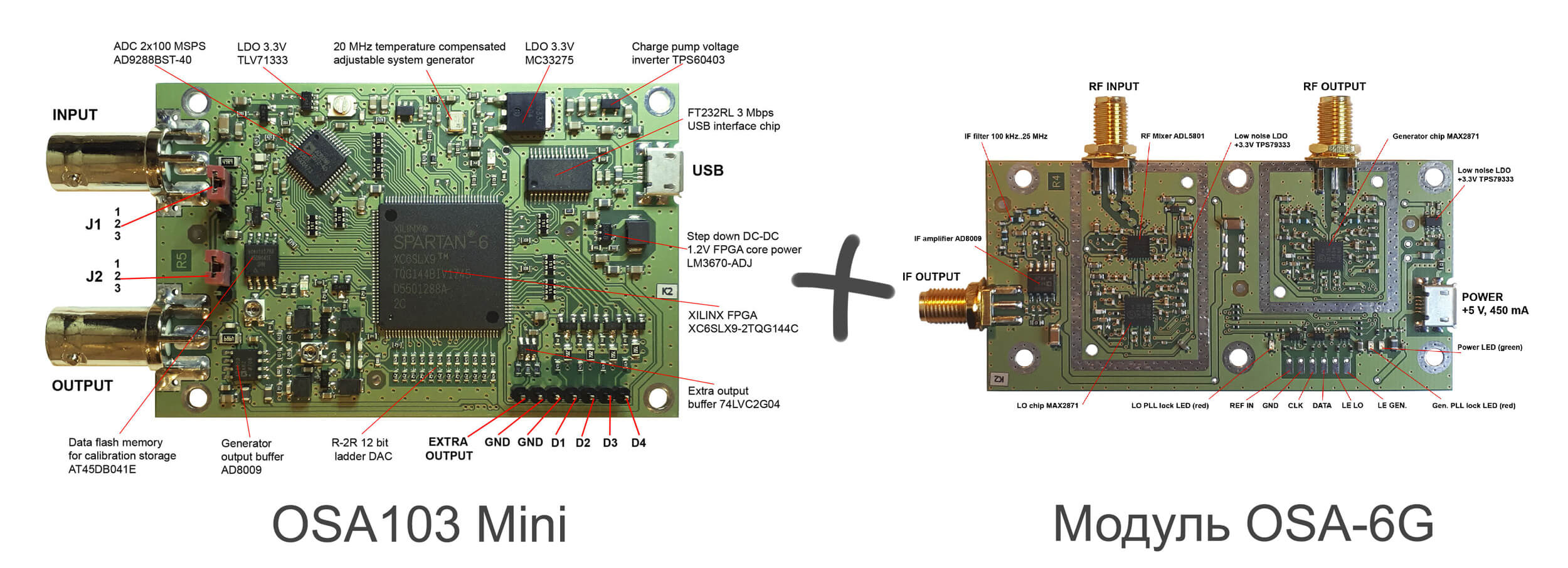
Osa103 Mini - the universal measuring instrument for radio amateurs and engineers
Directional coupler
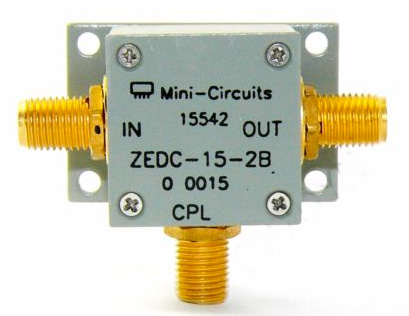
A directional coupler is a device that diverts a small portion of the RF signal traveling in a specific direction. In our case, it must branch out a part of the reflected signal (going from the antenna back to the generator) to measure it.
Visual explanation of the operation of the directional coupler: youtube.com/watch?v=iBK9ZIx9YaY
Main characteristics of the directional coupler:
- Operating frequencies - a range of frequencies at which the main indicators do not go beyond the norm. My coupler is designed for frequencies from 1 to 1000 MHz
- Coupling - what part of the signal (in decibels) will be diverted when the wave direction is from IN to OUT
- Directivity - how much less signal will be diverted when the signal moves in the opposite direction from OUT to IN
At first glance, this looks rather confusing. For clarity, imagine a coupler as a water pipe, with a small tap inside. The tap is made in such a way that when water moves in the forward direction (from IN to OUT), a significant part of the water is diverted. The amount of water that is discharged in this direction is determined by the Coupling parameter in the coupler datasheet.
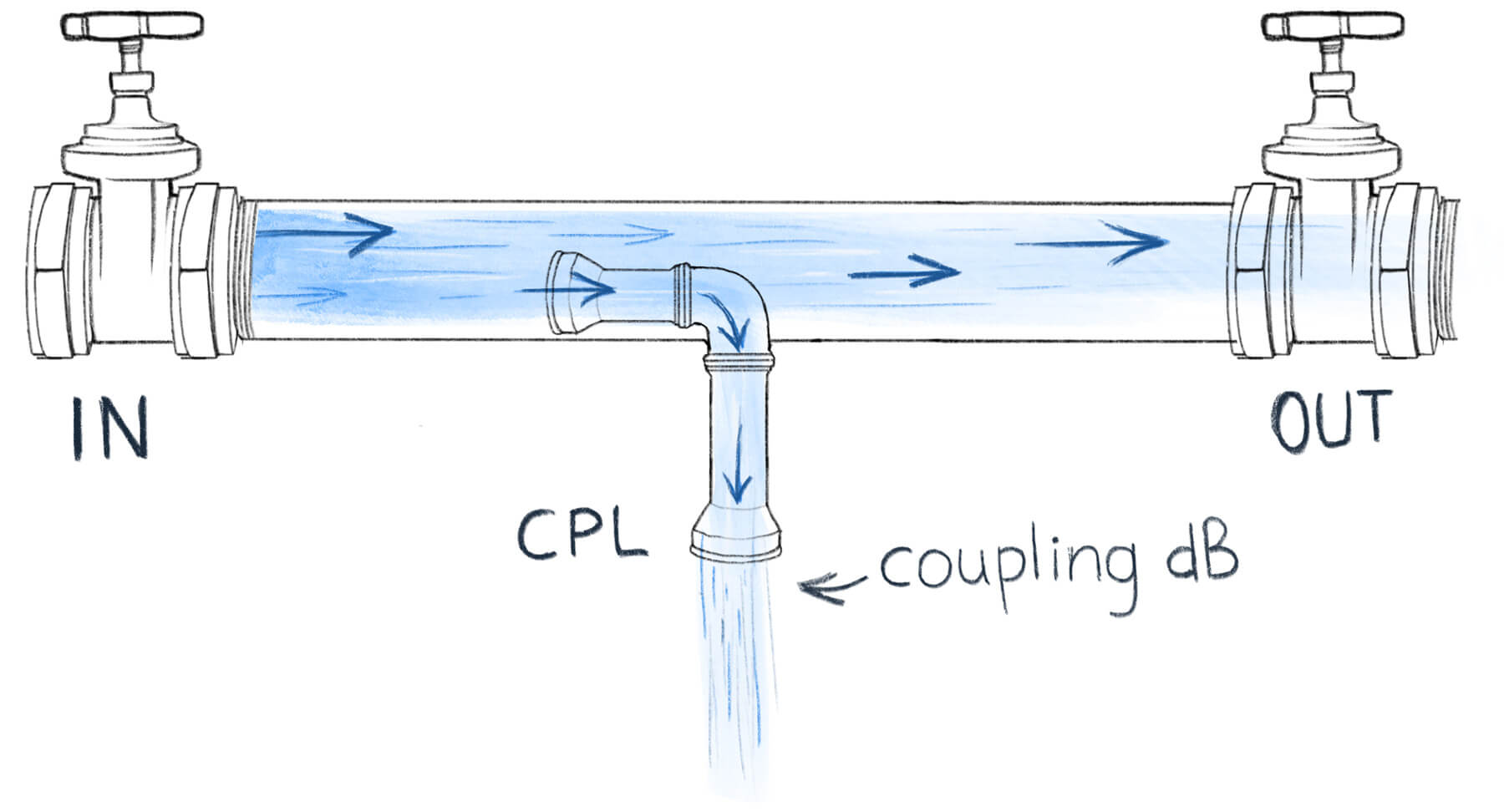
When water moves in the opposite direction, much less water is discharged. It should be taken as a side effect. The amount of water that is diverted during this movement is determined by the Directivity parameter in the datasheet. The smaller this parameter (the greater the dB value), the better for our task.
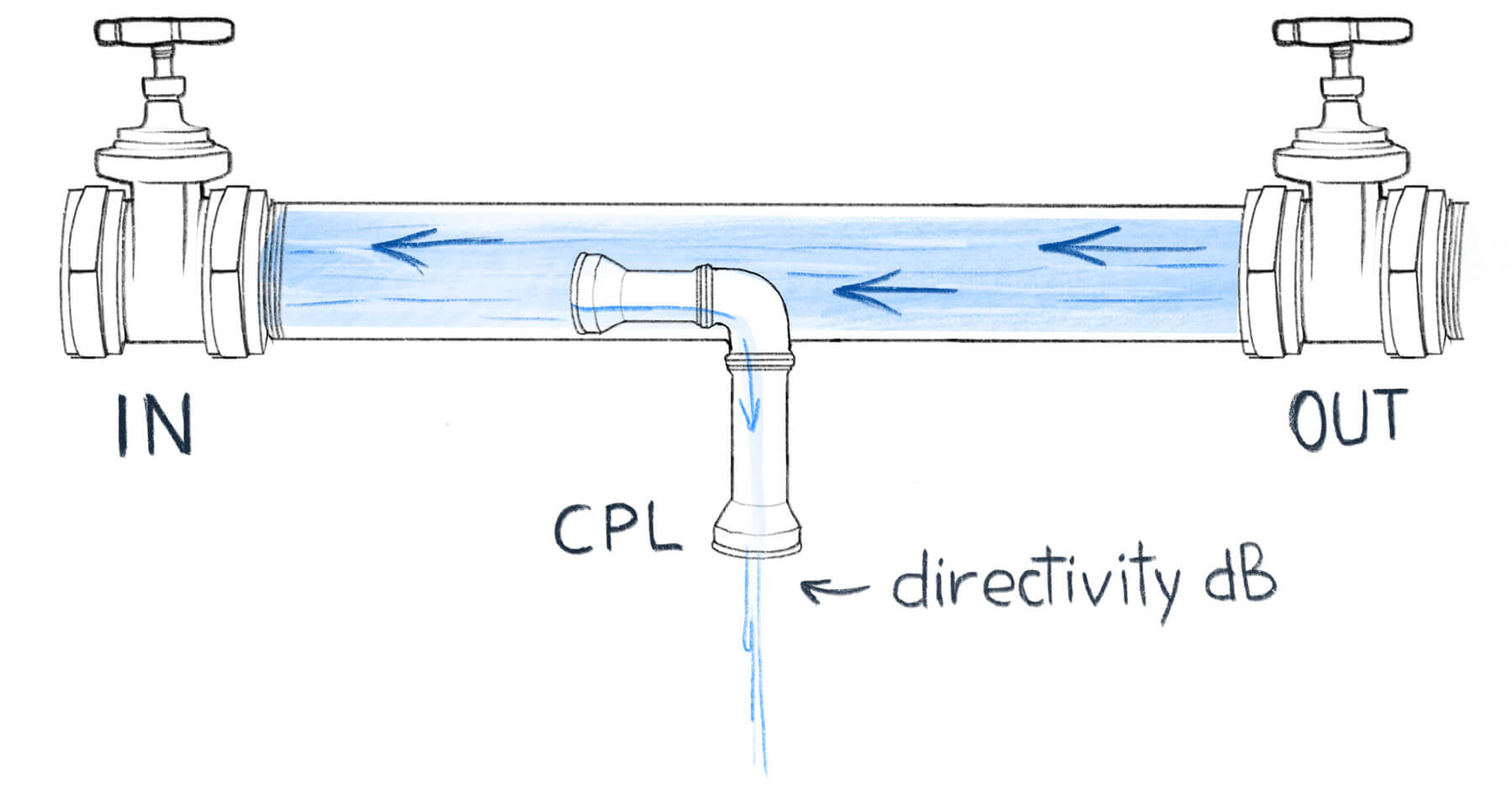
Circuit diagram
Since we want to measure the signal level reflected from the antenna, we connect it to the coupler IN and the generator to OUT. Thus, the receiver will receive part of the signal reflected from the antenna for measurement.
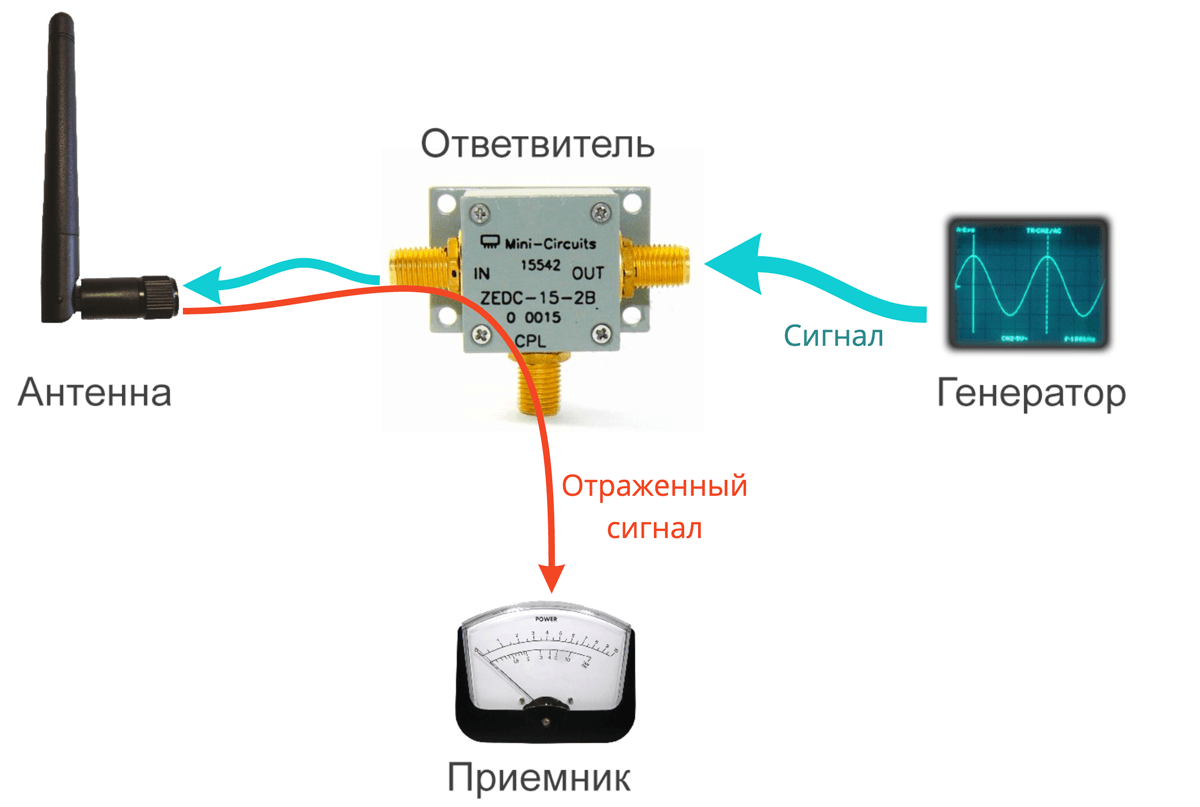
Coupler connection diagram. The reflected signal is sent to the receiver.
Measuring installation
We assemble the installation for measuring the SWR in accordance with the circuit diagram. At the output of the device’s generator, we additionally install an attenuator with a 15 dB attenuation. This will improve the matching of the coupler with the output of the generator and increase the accuracy of the measurement. The attenuator can be taken with a attenuation of 5..15 dB. The attenuation value is automatically taken into account during subsequent calibration.
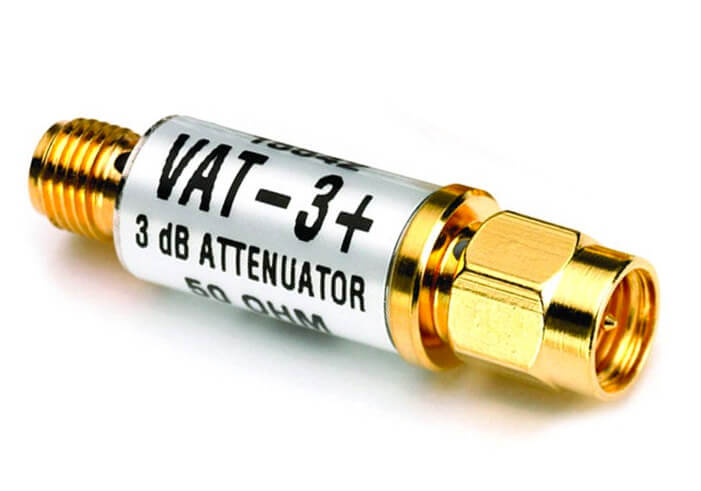
The attenuator attenuates the signal by a fixed number of decibels. The main characteristic of the attenuator is the attenuation coefficient of the signal and the operating frequency range. At frequencies outside the operating range, the characteristics of the attenuator can change unpredictably.
This is how the final setup looks. You must also remember to send an intermediate frequency (IF) signal from the OSA-6G module to the main board of the device. To do this, connect the IF OUTPUT port on the main board with INPUT on the OSA-6G module.
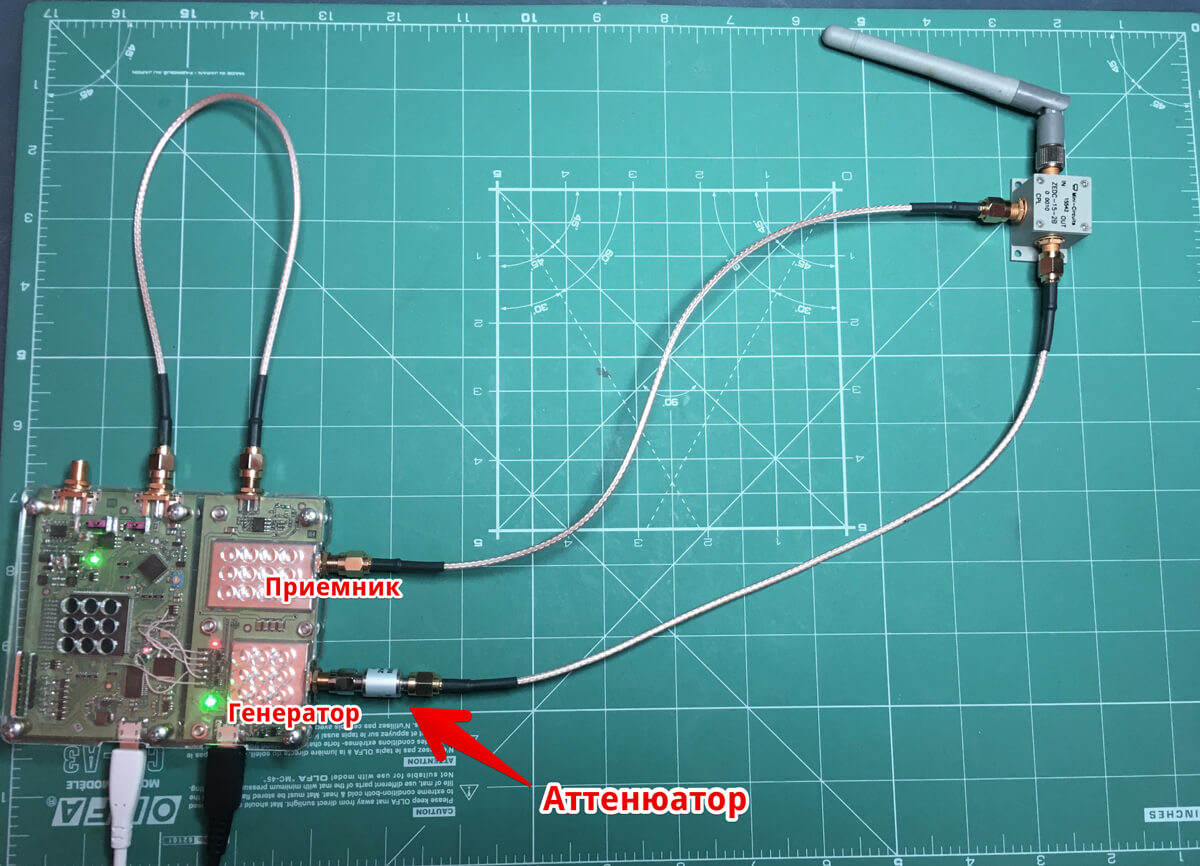
To reduce the level of interference from a switching power supply of the laptop, I take all measurements when the laptop is powered by battery.
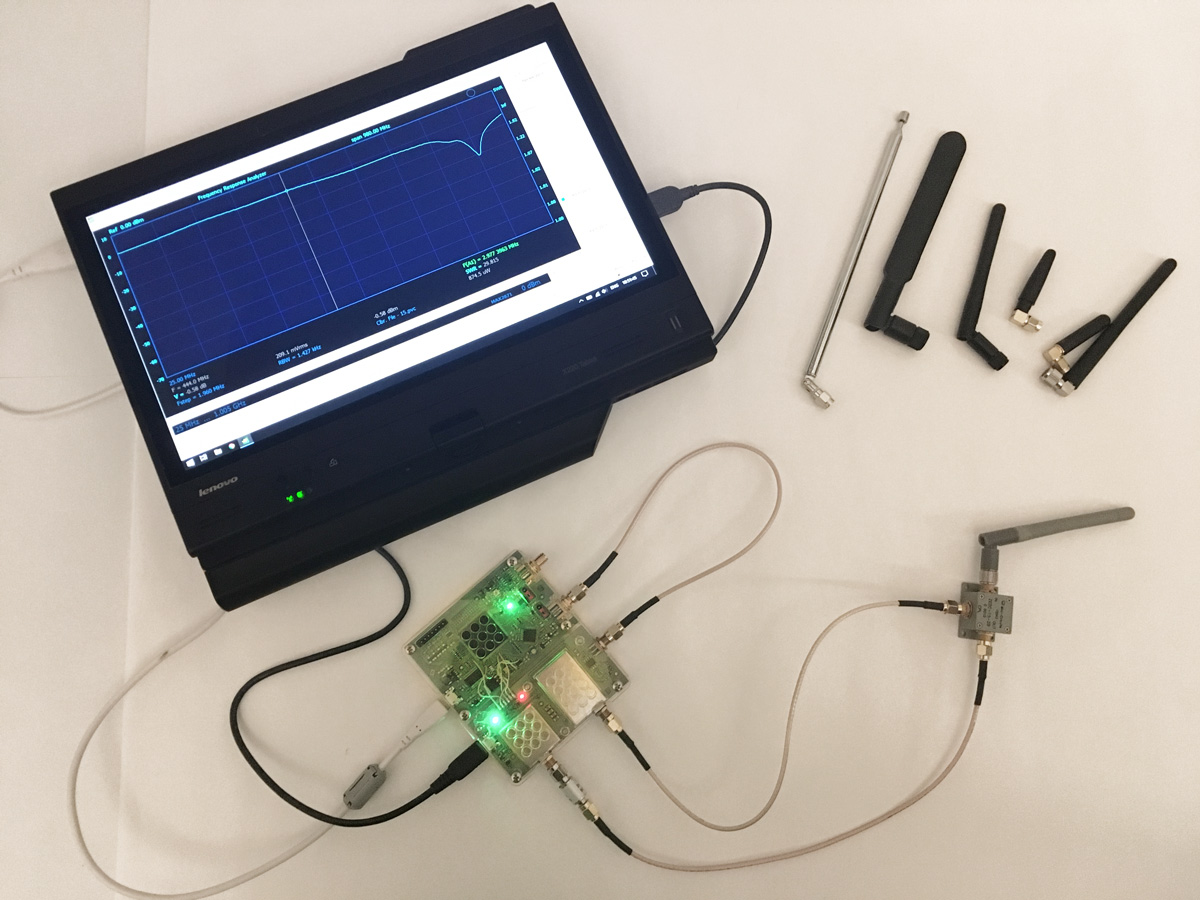
Calibration
Before starting measurements, you need to make sure that all nodes of the device and the quality of the cables are working, for this we connect the generator and receiver directly with a cable, turn on the generator and measure the frequency response. We get an almost flat graph at 0dB. This means that over the entire frequency range, all the radiated power of the generator has reached the receiver.
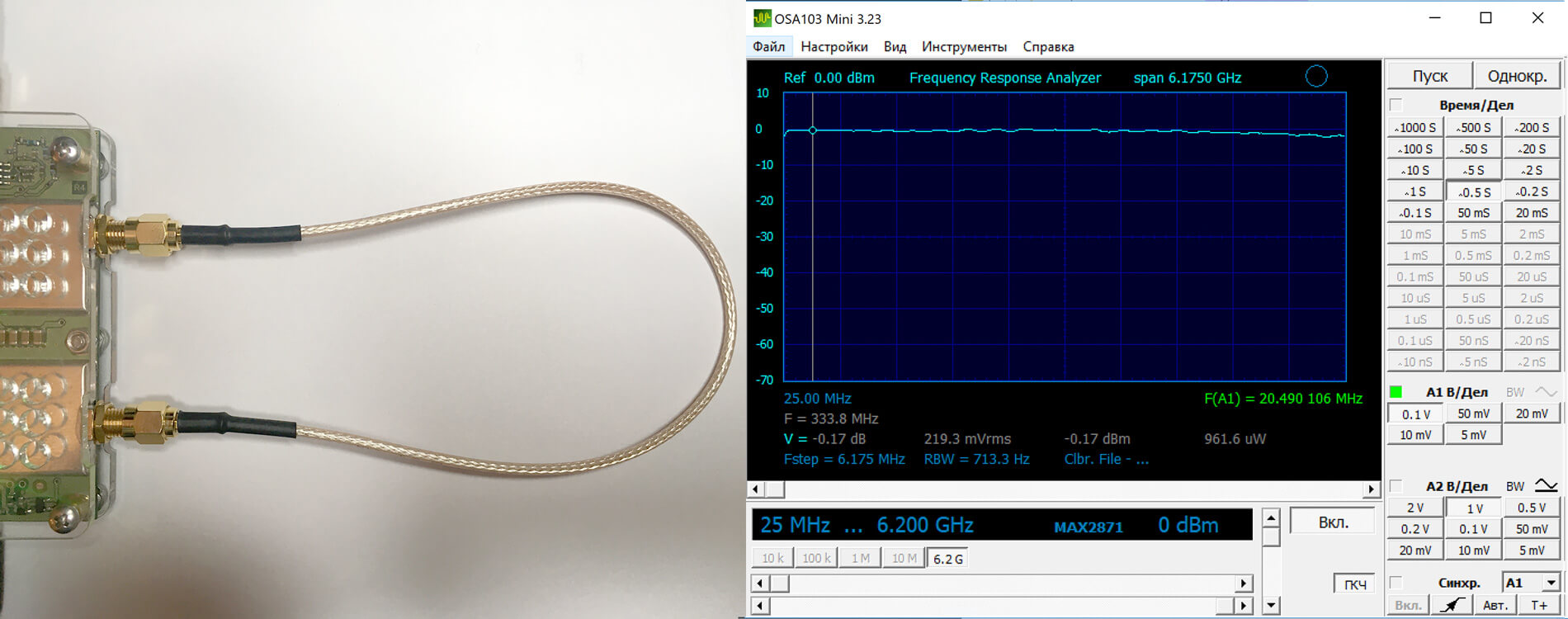
Connecting the generator directly to the receiver
Add an attenuator to the circuit. You can see an almost even attenuation of the signal by 15dB over the entire range.
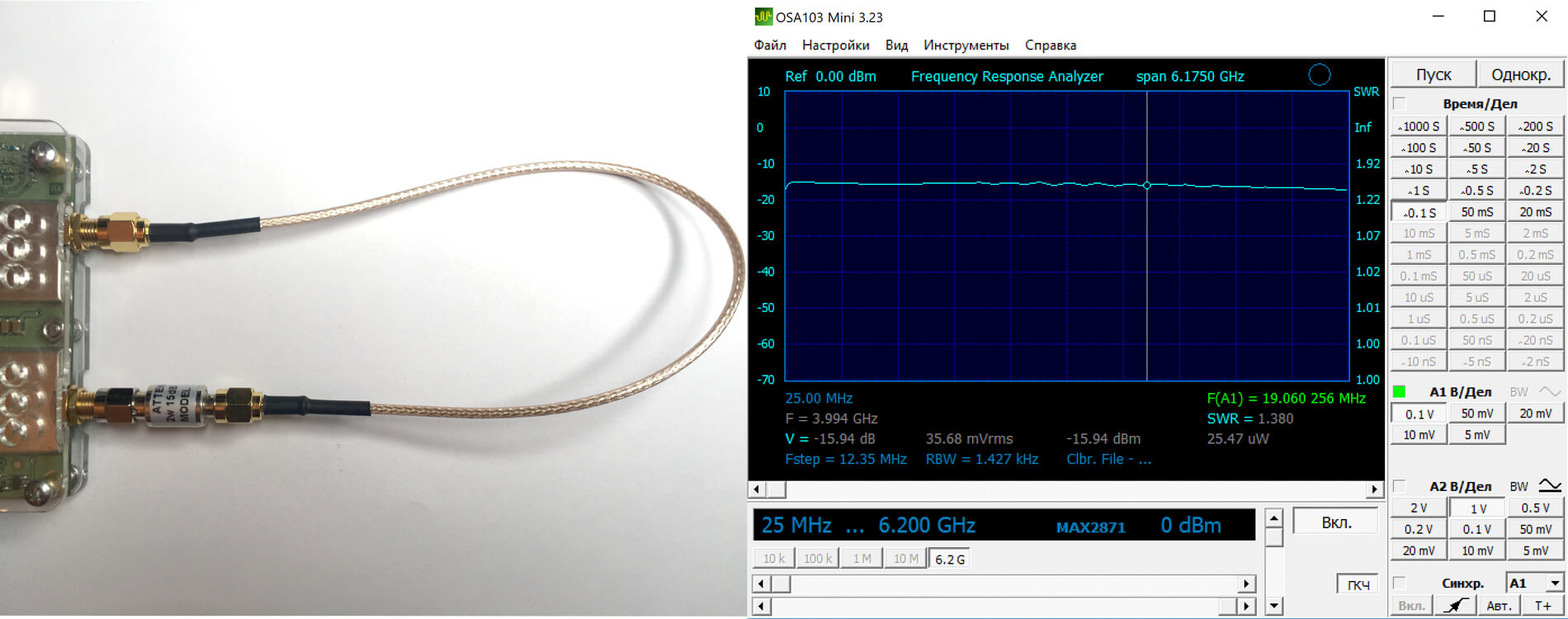
Connecting the generator via a 15dB attenuator to the receiver
Connect the generator to the OUT connector of the coupler and the receiver to the CPL of the coupler. Since no loads are connected to the IN port, the entire generated signal should be reflected, and part of it will branch to the receiver. According to the datasheet for our coupler ( ZEDC-15-2B), the Coupling parameter is ~ 15db, which means we should see a horizontal line at about -30 dB (coupling + attenuator attenuation). But since the operating range of the coupler is limited to 1 GHz, all measurements above this frequency can be considered meaningless. This is clearly visible on the graph, after 1 GHz the readings are chaotic and do not make sense. Therefore, we will conduct all further measurements in the operating range of the coupler.
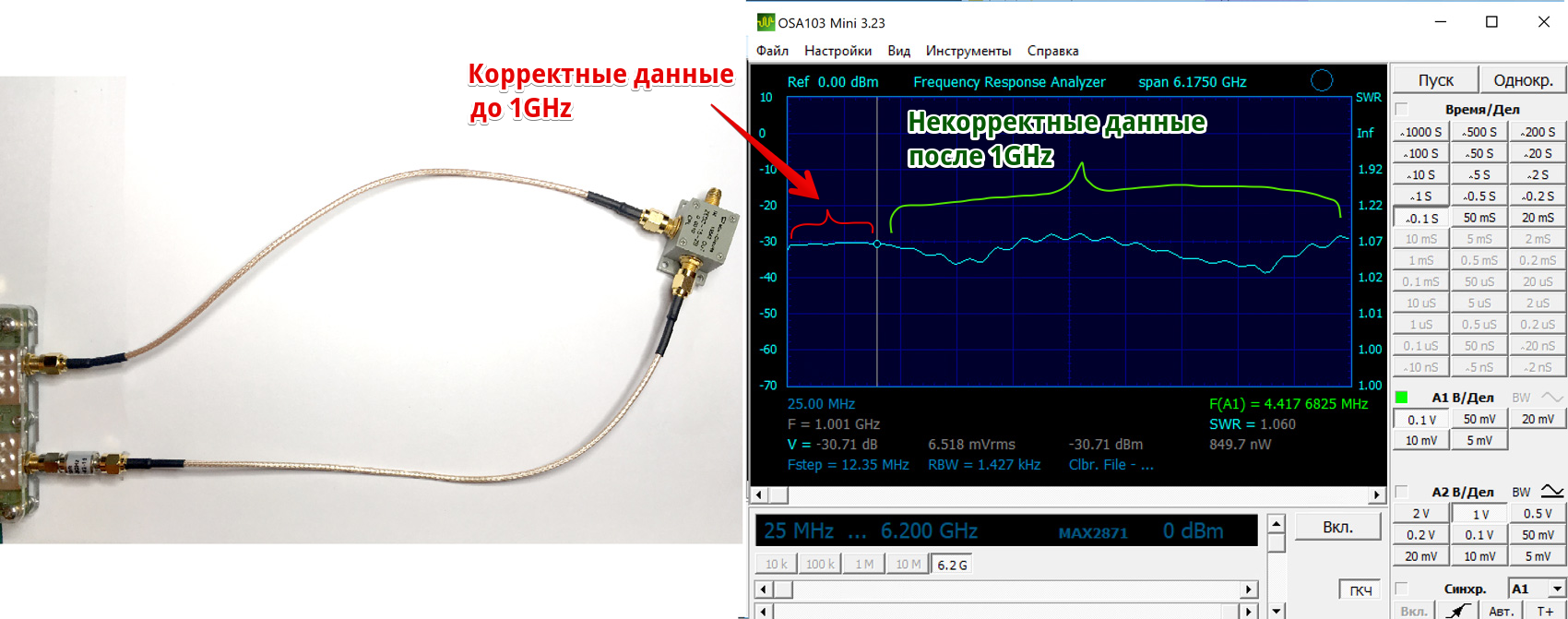
Connecting a tap without load. The operating range limit of the coupler is visible.
Since the measurement data above 1 GHz, in our case, do not make sense, we will limit the maximum frequency of the generator to the operating values of the coupler. When measuring, we get a straight line.
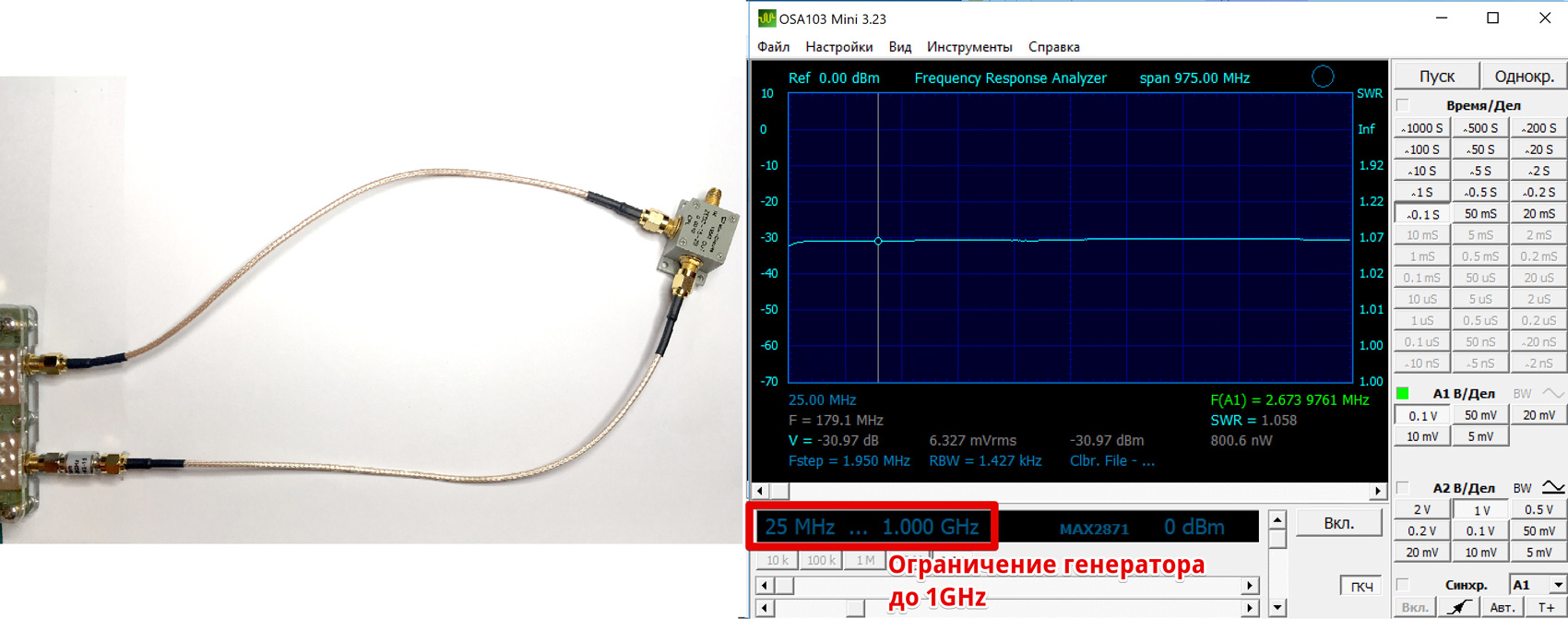
Limiting the range of the generator to the operating range of the coupler
In order to visually measure the SWR of the antennas, we need to calibrate to take the current circuit parameters (100% reflection) as a reference point, that is, zero dB. To do this, the OSA103 Mini program has a built-in calibration function. Calibration is performed without a connected antenna (load), calibration data is written to a file and subsequently automatically taken into account when plotting graphs.
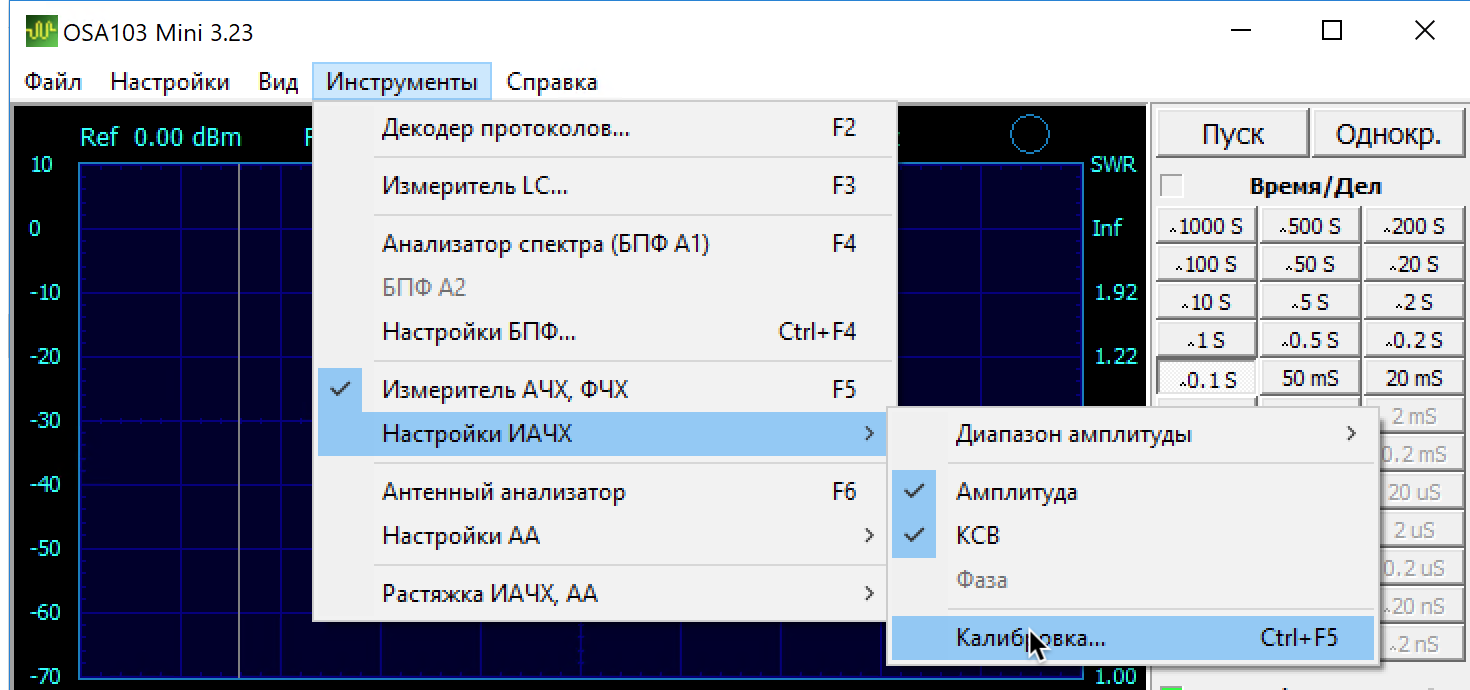
Calibration function of the IAC in OSA103 Mini
Applying the calibration results and starting the measurements without load, we get an even graph at 0dB.
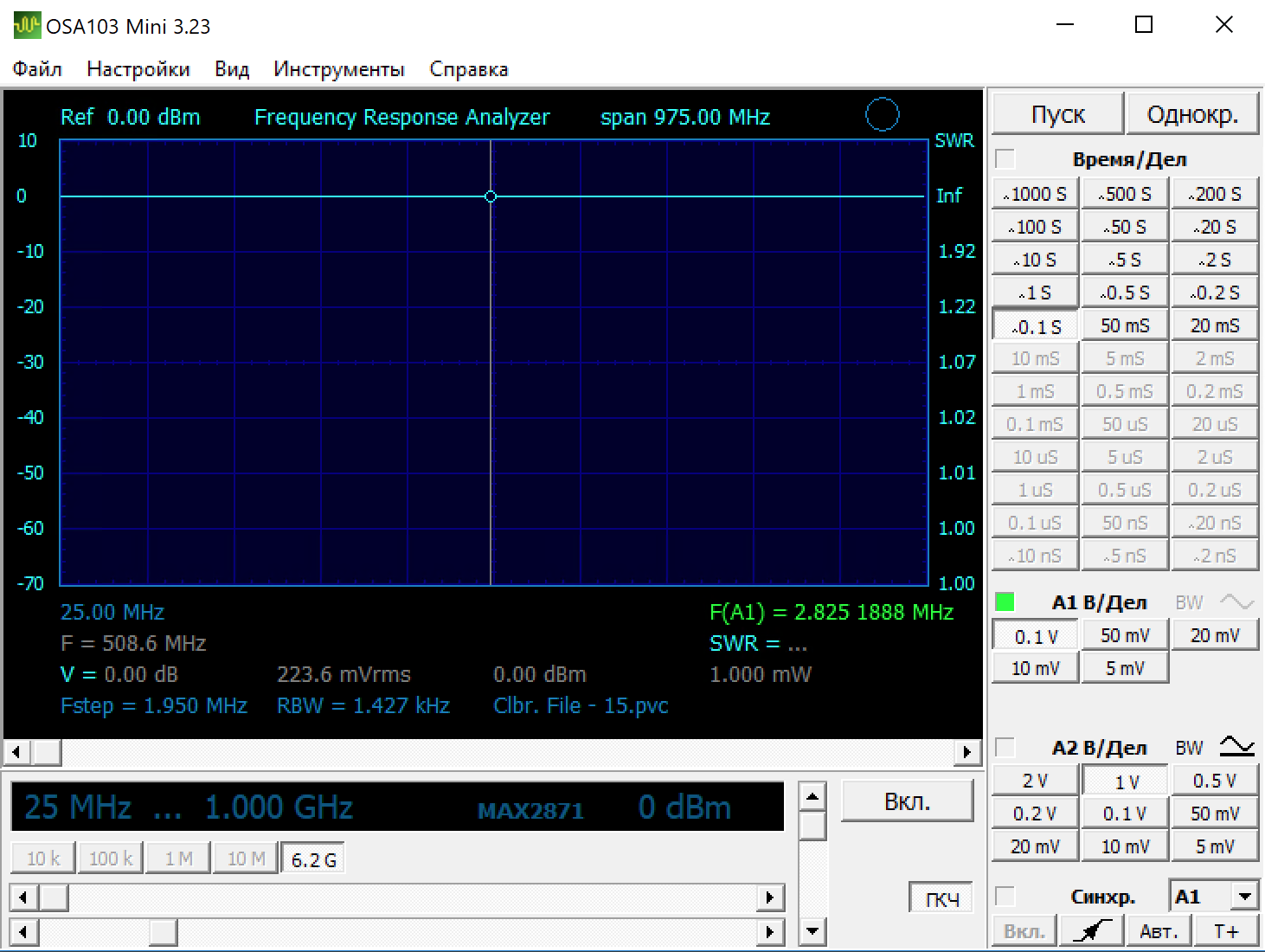
Graph after calibration
Measuring Antennas
Now you can begin to measure the antennas. Thanks to calibration, we will see and measure the decrease in reflection after connecting the antenna.
Antenna from Aliexpress at 433MHz
Antenna marked 443MHz. It can be seen that the antenna works most efficiently in the 446 MHz band, at this frequency the SWR is 1.16. At the same time, at the declared frequency, the indicators are significantly worse, at 433MHz SWR 4.2.
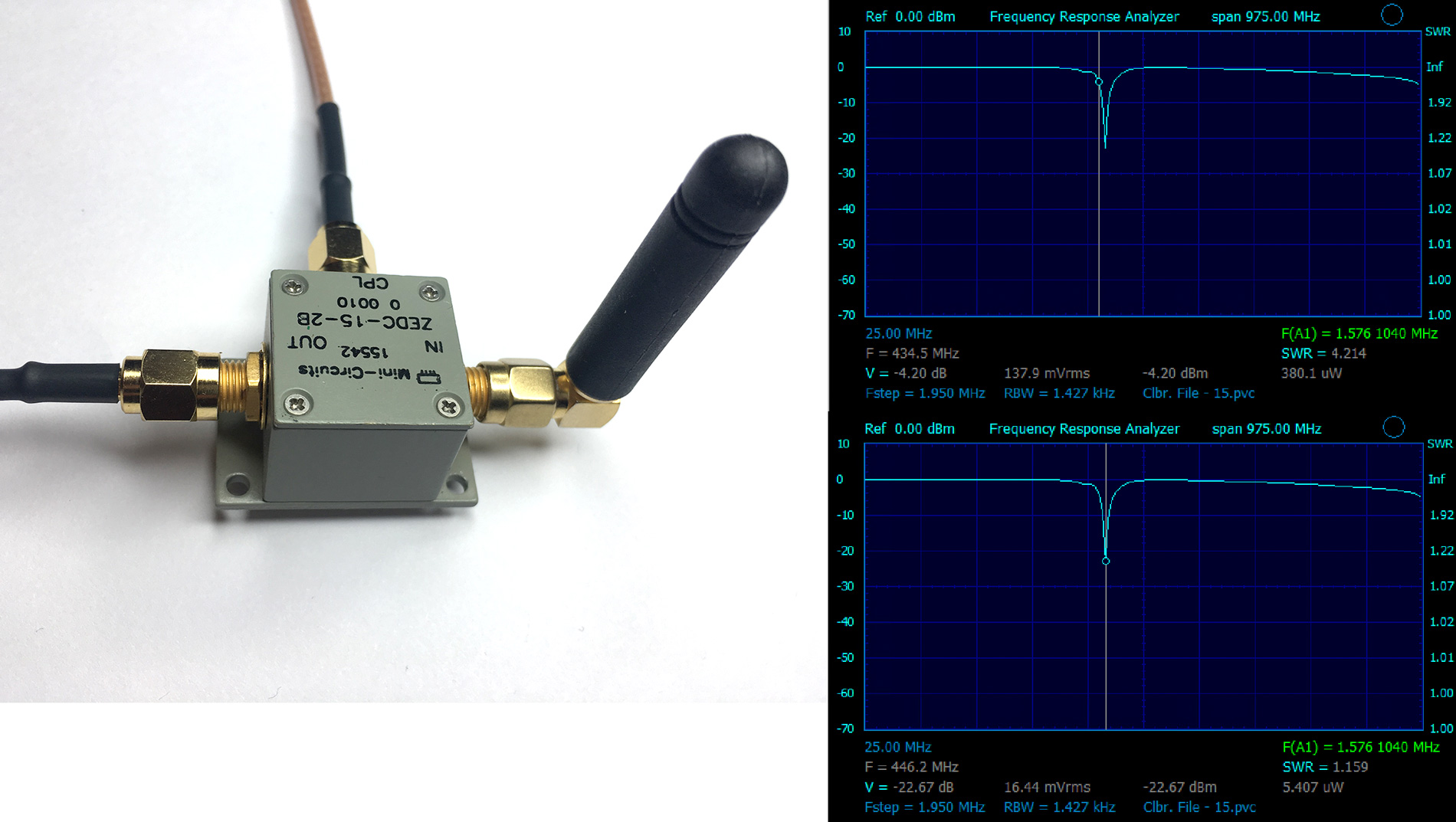
Unknown antenna 1
Antenna without marking. Judging by the schedule, it is designed for 800 MHz, presumably for the GSM range. In fairness, I must say that this antenna also works at 1800 MHz, but due to the limitations of the coupler I can’t make the correct measurements at these frequencies.

Unknown antenna 2
Another antenna that has been lying in my boxes for a long time. Apparently, also for the GSM-band, but already better than the previous one. At a frequency of 764 MHz, the SWR is close to unity, at 900 MHz the SWR is 1.4.
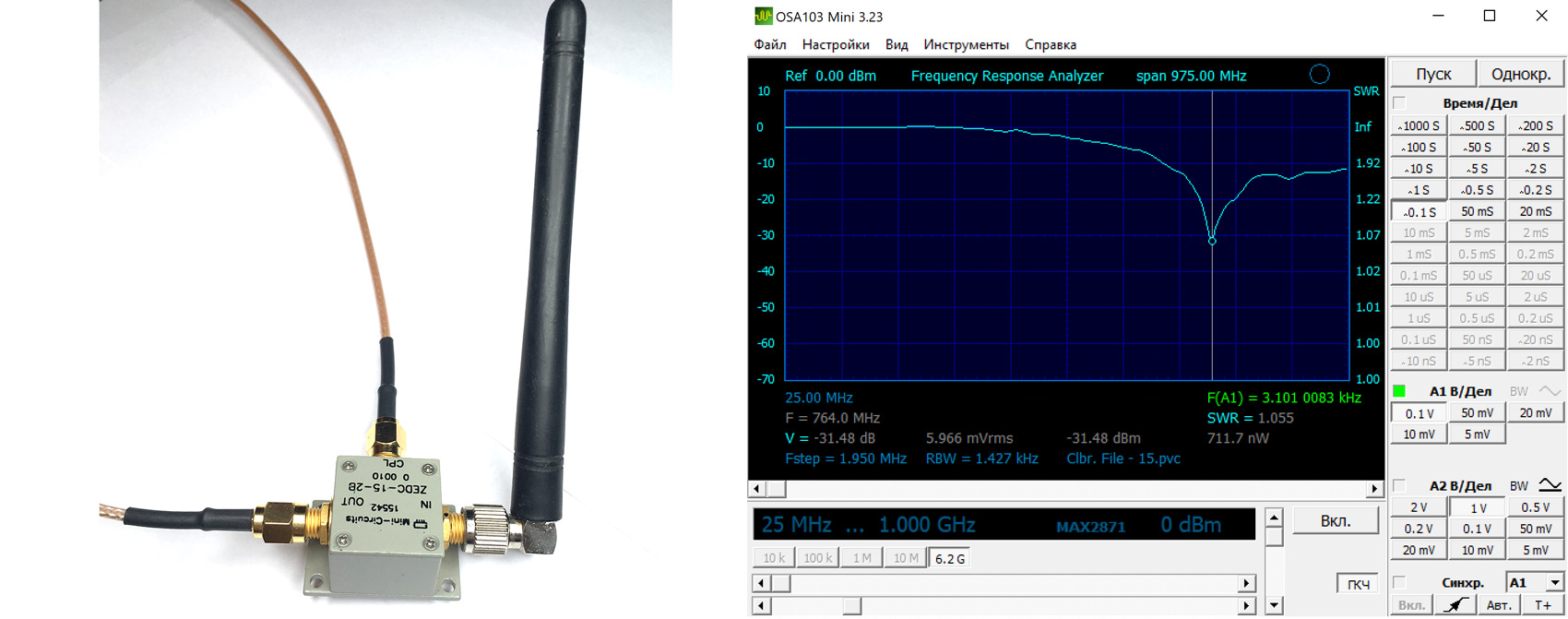
Unknown antenna 3
This is similar to a Wi-Fi antenna, but for some reason the connector is SMA-Male, and not RP-SMA, like all Wi-Fi antennas. Judging by the measurements, at frequencies up to 1 GHz this antenna is useless. Again, due to the coupler’s limitations, we won’t know what kind of antenna it is.

Telescopic antenna
Let's try to calculate how much you need to extend the telescopic antenna for the 433MHz range. The formula for calculating the wavelength: λ = C / f, where C is the speed of light, f is the frequency.
299.792.458 / 443.000.000 = 0.69719176279
The total wavelength is 69.24 cm.
Half the wavelength is 34.62 cm.
A quarter of the wavelength is 17.31 cm.

The antenna calculated in this way was absolutely useless. At a frequency of 433 MHz, the SWR value is 11. By
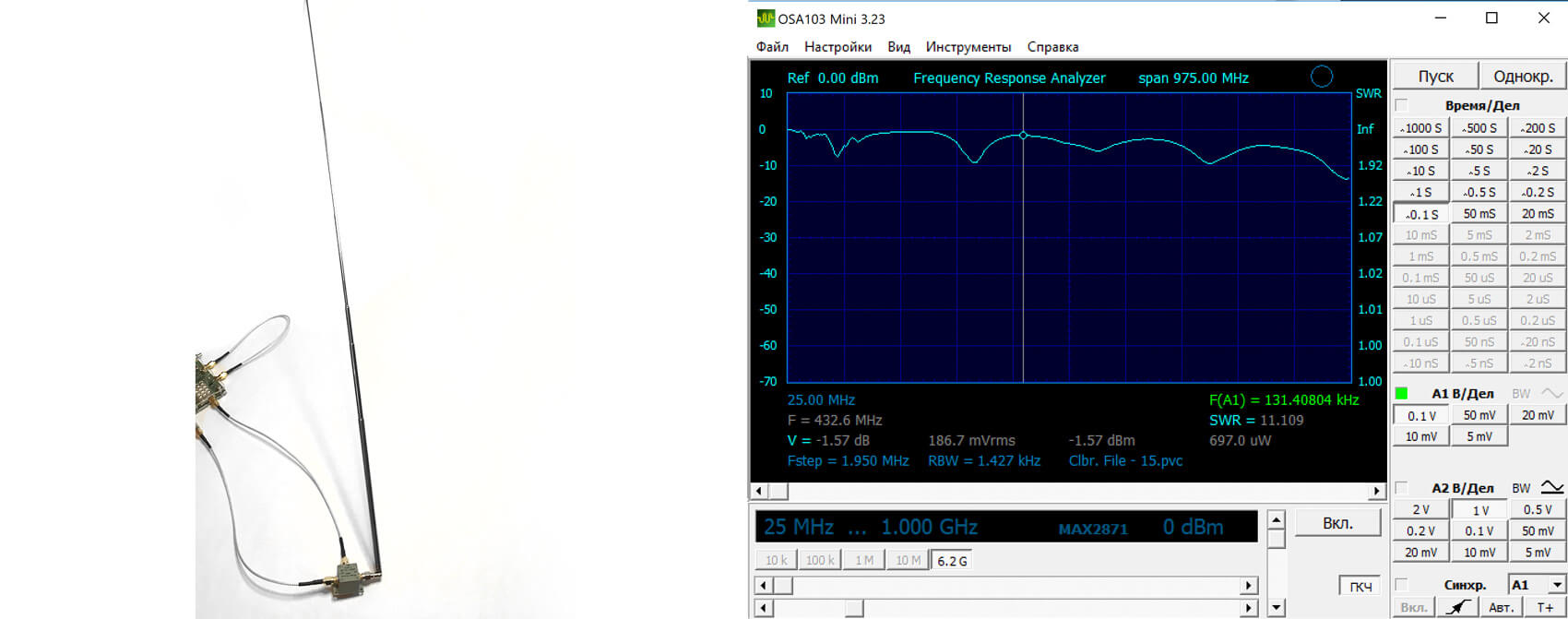
experimentally extending the antenna, I was able to achieve a minimum SWR of 2.8 with an antenna length of about 50 cm. It turned out that the thickness of the sections is of great importance. That is, when pulling out only thin extreme sections, the result was better than pulling out only thick sections to the same length. I don’t know how much it’s worth relying on these calculations with the length of the telescopic antenna, because in practice they do not work. Maybe with other antennas or frequencies it works differently, I don’t know.
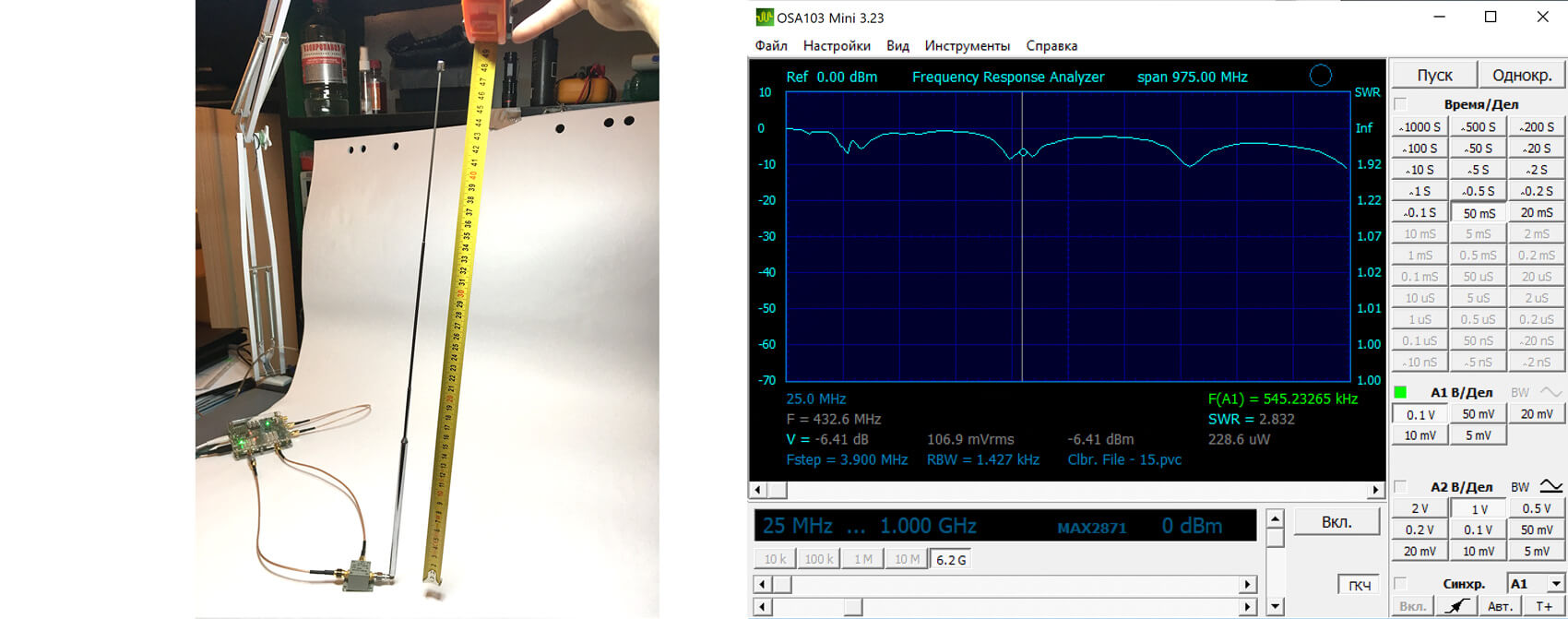
A piece of wire at 433MHz
Often in different devices, such as radio switches, you can see a piece of straight wire as an antenna. I cut a piece of wire equal to a quarter of the wavelength of 433 MHz (17.3 cm), and tinned the end so that it fits snugly into the SMA Female connector.

The result was strange: such a wire works well at 360 MHz but is useless at 433 MHz.
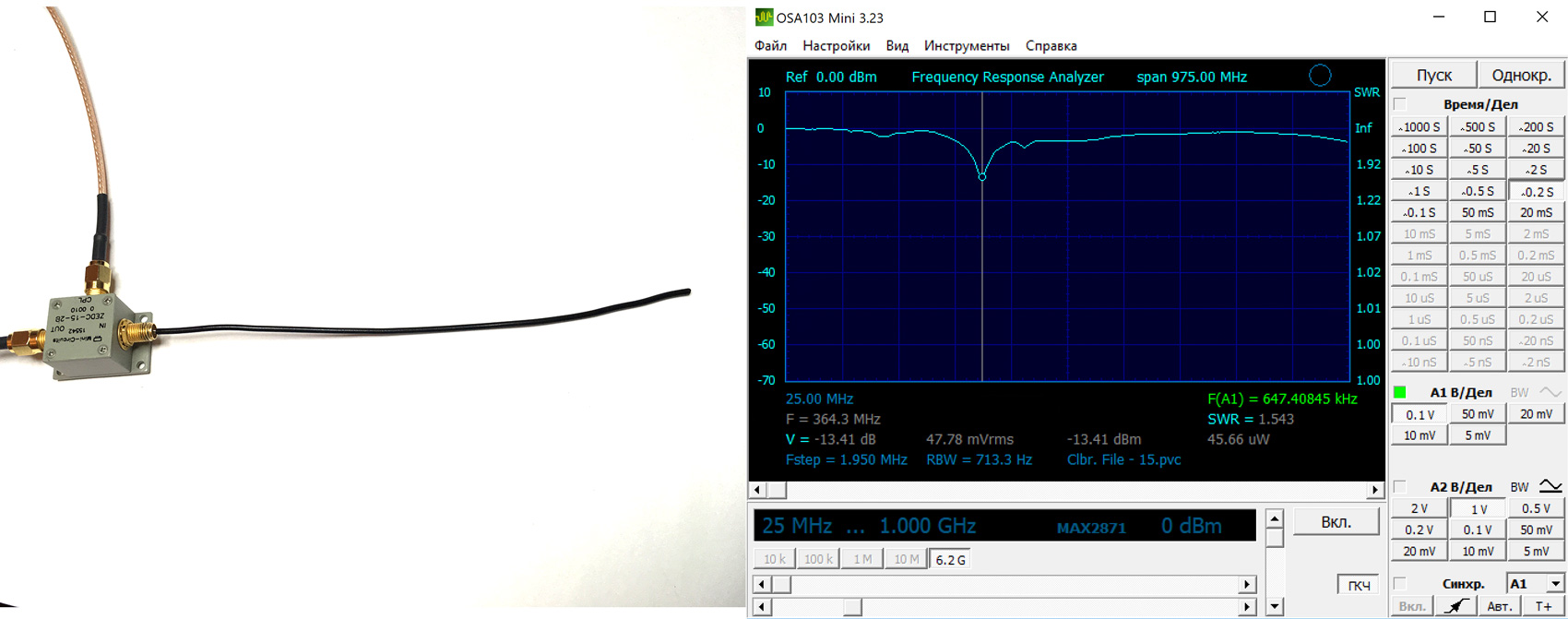
I began to cut a piece of wire from the end and look at the readings. The failure on the chart began to slowly shift to the right, towards 433 MHz. As a result, at a wire length of about 15.5 cm, I managed to get the lowest SWR value of 1.8 at a frequency of 438 MHz. Further shortening of the cable led to an increase in SWR.
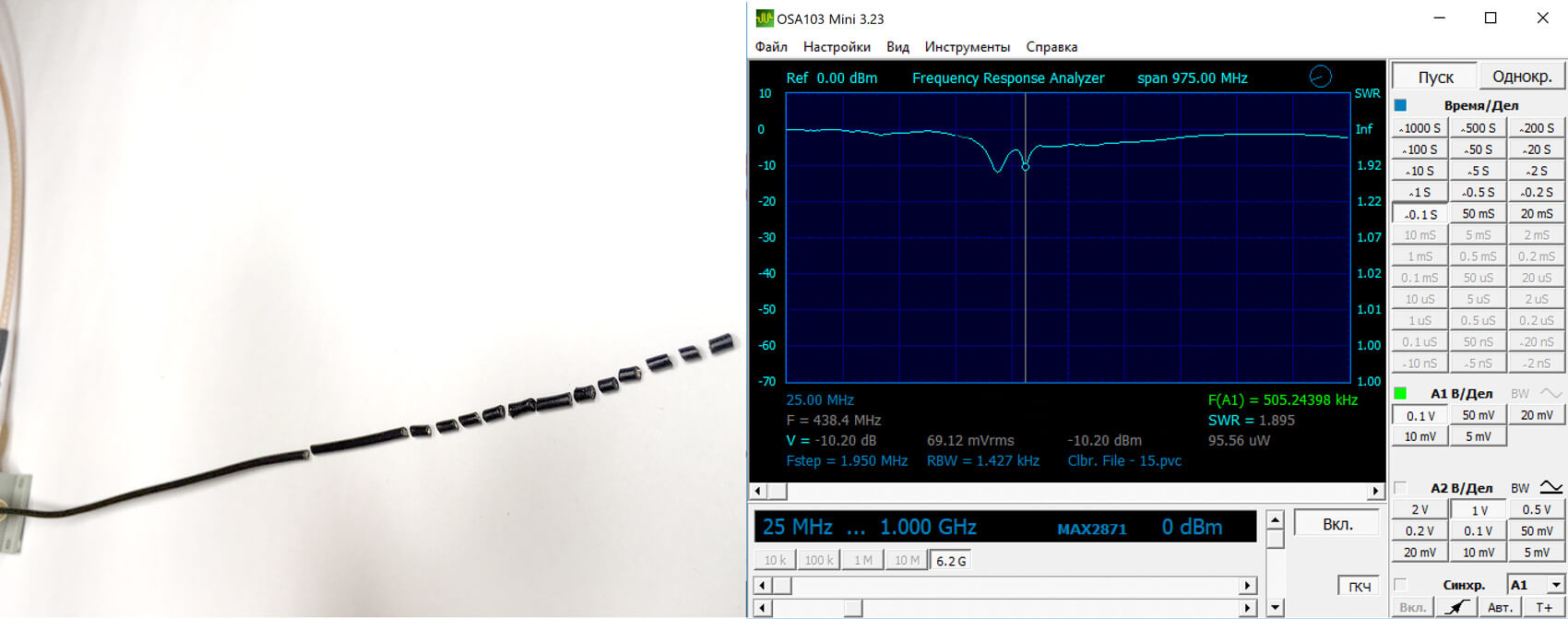
Conclusion
Due to the coupler’s limitations, it was not possible to measure antennas in the bands above 1 GHz, for example, Wi-Fi antennas. This could be done if I had a larger broadband coupler.
A coupler, connecting cables, instrument, and even a laptop are parts of the resulting antenna system. Their geometry, position in space and surrounding objects affect the measurement result. After installation on a real radio station or modem, the frequency may shift, because the body of the radio station, modem, the body of the operator will become part of the antenna.
OSA103 Mini is a very cool multifunctional device. I express gratitude to its developer for consultation during the measurements.
